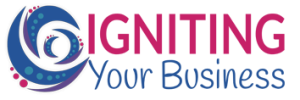If you’ve ever agonized over what to write on your About page or how to introduce yourself at a speaking event or podcast interview, you’re not alone.
Most entrepreneurs—especially those pivoting into their encore careers—struggle to tell their story in a way that feels authentic and strategic.
Why?
Because they’re telling a bio, not an origin story.
And that’s the difference between sparking a connection… or just listing your credentials.
In this post, we’re going to walk through how to craft a compelling origin story—one that shows your “why,” builds trust, and draws in the clients who are meant to work with you. It’s part clarity exercise, part marketing magic—and all about making your story work for your business.
Wait… What’s the Difference Between a Bio and an Origin Story?
Let’s clear that up first.
Your bio is a professional summary. It’s usually written in third person. It highlights your credentials, years of experience, and notable accomplishments.
Your origin story is personal. It’s human. It’s the moment (or series of moments) that explain why you do what you do—and how your journey has uniquely equipped you to help others.
Think of your bio as proof. But your origin story?
That’s your why.
And in a world full of services that sound the same, your why is what helps you stand out.
Why Your Origin Story Matters
In a digital world, we’re all trying to build connection at a distance. Your website, your social posts, your email sequences—all of it is working to help your audience feel like they know you.
And here’s what people actually want to know:
- Can I trust you?
- Do you understand where I’m coming from?
- Have you walked a path like mine?
- Does this matter to you?
That’s what a great origin story answers.
And when someone sees themselves in your story, that’s the moment they lean in!
The 6 Elements of a Great Origin Story
Let’s break down what actually goes into a story that resonates.
1. Start with a Hook or Turning Point
Don’t start at the beginning of your life. Start at the moment that changed things.
- Maybe it was when you left corporate.
- Maybe it was the burnout moment, the “I can’t do this anymore” realization.
- Maybe it was a quiet moment of clarity.
The key is to grab your reader or listener right away with a turning point that matters.
2. Show the Struggle
We trust people who show us their human side. Sharing your struggles, doubts, or failures isn’t weakness—it’s relatability.
This doesn’t mean oversharing, but it does mean being real about what you had to overcome.
Let people walk with you through that moment of uncertainty. That’s what makes the transformation feel real.
3. Reveal Your Why
This is the emotional heartbeat of your story. Why does your work matter to you personally?
- Maybe you didn’t have the kind of support you now provide.
- Maybe you saw a gap in your industry.
- Maybe you turned your own pain into purpose.
Get to the root of it—and share it.
4. The Soft Pivot: Connect the Dots
This is where your story shifts from personal to professional—without sounding like a pitch.
It’s subtle. It’s intentional. And it’s powerful.
Here’s what it might sound like:
“That experience taught me how powerful clarity can be—and it’s exactly why I now help midlife entrepreneurs create clear, client-attracting messaging.”
The soft pivot is that sentence—or two—that ties your transformation to your business. You’re not selling here. You’re simply explaining how your experience now helps others.
Ask yourself: What moment in your journey naturally leads to the work you do now—where your personal transformation became a calling to help others?
5. Offer a Pearl of Wisdom
What’s one truth, insight, or lesson that came from your experience?
Something that would make your audience nod and say, “Yes. That’s exactly it.”
It doesn’t have to be profound. It just has to be true and yours.
“I realized visibility isn’t about being loud—it’s about being clear.”
“You don’t need to do more. You need to do what matters.”
“Your message gets to be simple, and still be powerful.”
This is often the line people quote back to you. Make it count.
6. Point to What You Do Now—Briefly
This is where you wrap it all up and share what you do today—but gently.
You’re still in story mode. This isn’t a place for your full service menu.
Just a sentence or two to clarify:
“Today, I help midlife business owners simplify their marketing so they can attract better clients without burning out.”
Then invite them to take the next step: explore your services, download your lead magnet, or book a call.
Best Practices for a Story That Connects
- Write it in first person. Let it sound like a conversation, not a press release.
- Keep it under 500 words on your website.
- Shorter is stronger. You can always expand it for talks or podcast interviews.
- Use present tense for key moments. Instead of “In 2019, I realized…” try “It’s 2019. I’m staring at my calendar, wondering how I got here…”
- Skip the bragging. Your bio is for accomplishments. Your story is for connection.
- Make it feel like a journey. You want the reader to feel like they’ve walked with you—and see where they might go with your help.
What About Credentials?
Yes, you still need them. Some of your audience—the spreadsheet lovers, the fact-checkers—want to see the receipts.
But your story isn’t the place for that long list of degrees, certifications, or awards.
Here’s what to do instead:
-
- Add a “Read My Full Bio” button on your About page.
- a collapsible section or sidebar for professional highlights.
- Include your credentials in your media kit or speaker page.
- Let the story do the connecting. Let the bio do the proving.
Remember: Your credentials are your proof. Your story is your why.
Your Story Is More Than Just a Marketing Tool
Crafting your origin story isn’t just about converting leads. It’s about clarity. Alignment. And anchoring yourself in your purpose.
When you know how to tell your story with heart and structure, everything else in your business becomes easier:
-
-
- Your content flows more naturally.
- Your About page resonates.
- Your talks feel more personal.
- Your clients trust you faster
-
Because at the end of the day, we don’t do business with people because of their bullet points.
We do business with people because of how they make us feel.
And a great story?
That’s how you make people feel seen, understood, and ready to take the next step—with you.
Ready to Share Yours?
If you’re ready to turn your journey into a story that connects and converts—let’s talk. Whether you want help shaping your own message or guiding your clients through this process, I’m here for that.
Schedule your Profitable Path Alignment Call today!
Or tune into this week’s episode of The Encore Entrepreneur for a full breakdown of how to build your origin story from the ground up.
Your story matters. Let’s make sure the right people hear it.






